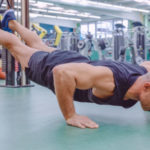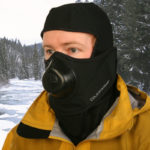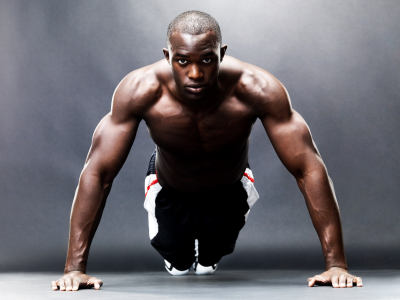Many desire to begin an exercise program but, have not done so because they simply do not know how. Following are our recommendations and some general guidelines for beginning a workout program.
You are taking an important first step on the path to physical fitness. The next step is to decide that you are going to be physically fit.
The decision to carry out a physical fitness program requires a lifelong commitment of both time and effort. You must make it a lifestyle! There are no quick remedies or magic fat burning pills that will give you a great body, make you physically fit, or reduce your body size through fat loss. Exercise must become one of those things that you do without question, like breathing, eating or brushing your teeth.
Unless you are convinced about the benefits of fitness and the risks of not being fit, you will not succeed with your goal. We encourage you to read all the Q & A sections on the MyHealthandFitness web site, especially those on Diet & Nutrition and Health & Wellness. Use this information to peak your interest and begin a fitness program today.
Patience is essential. Dr. Tindall stresses the two most important factors on your way to a healthier body and lifestyle: 1) Get started on a fitness program as soon as you can; 2) Gradually increase your workout intensity as your body becomes accustomed to the exercises. Don’t try to do too much too soon and don’t quit before you have a chance to experience the rewards of improved fitness. You must Drive for It, Intensify It, and Desire It! You will not regain in a few days or weeks what you have lost through years of inactivity or a sedentary lifestyle, but you can become revitalized, vigorous, and add years to your life if you are persistent. And, you can fight the aging process through becoming more fit. The prize is worth the price.
Following, you will find the basic information you need to begin and maintain a personal physical fitness and exercise program. These guidelines are intended for the average healthy adult. It tells you what your goals should be and how often, how long, and how hard you must exercise to achieve them. It also includes information that will make your workouts easier, safer and more satisfying. For information on specific or related issues for children, seniors, or women, see those sections under our Fitness section in the left side menu. Only you can do this, no one else can do it for you. This is your own walk and journey through life; make it an exciting one because you don’t get a round-trip ticket. So, make no excuses, just get started and enjoy the rewards of being fit.
CHECK YOUR HEALTH If you’re under 35 and in good health, you don’t usually need to see a doctor before beginning an exercise program. However, it is always recommended, just in case and we at MyHealthandFitness urge you to see your doctor before you begin any exercise program. If you are over 35 and have been inactive for several years, you must consult your physician. Other conditions that indicate a need for medical check-up are high blood pressure, heart trouble, family history of early stroke or heart attack, dizzy spells, extreme breathlessness after mild exertion, arthritis or other bone problems, severe muscular, ligament or tendon problems, other known or suspected disease(s), and if you are relocating from sea level or low altitude to a high altitude geographic region. Generally, vigorous exercise involves minimal health risks for persons in good health or those following a doctor’s advice. Far greater risks are present from habitual inactivity and obesity. These individuals must begin slowly and gradually increase exercise duration and intensity.
DEFINING FITNESS
Physical fitness enables us to perform up to our potential. Fitness can be described as a condition that helps us look, feel and do our best. Specifically, it is: “The ability to perform daily tasks vigorously and alertly, with energy left over for enjoying leisure-time activities and meeting emergency demands. It is the ability to endure, to bear up, to withstand stress, to carry on in circumstances where an unfit person could not continue, and is a major basis for good health and well-being.”
Physical fitness involves the performance of the heart and lungs, and the muscles of the body. Because what we do with our bodies also affects what we can do with our minds, fitness influences mental alertness and emotional stability to a certain degree.
As you undertake your fitness program, it’s important to remember that fitness is an individual quality that varies from person to person. Fitness is influenced by age, gender, heredity, personal habits, exercise, and eating practices. You cannot alter the first three factors but, it is within your ability and control to change and improve the others where needed.
KNOWING THE BASICS
Physical fitness has four major components, or “parts” for which there is widespread agreement.
Cardiovascular Endurance: The ability to deliver oxygen and nutrients to body tissues over sustained periods of time. Jogging and swimming are among the common methods used for measuring this component. You can also ski, bike, and perform other activities to do this.
Muscular Strength: The ability of a muscle to exert force for a brief period of time. Upper-body strength, for example, can be measured by various weight-lifting exercises such as bench presses, arm curls, and others.
Muscular Endurance: The ability of a muscle, or a group of muscles, to sustain repeated contractions or to continue applying force against a fixed object. Push-ups are often used to test endurance of arm and shoulder muscles.
Flexibility: The ability to bend joints and flex muscles through their full range of motion. The sit-and-reach test is a good measure of flexibility for the lower back and hamstrings (backs of the thighs). As we age, our flexibility decreases unless we counteract it by performing stretching and other physical activities.
Body Composition is also often considered a component of fitness, but not one of the major four. It refers to the makeup of the body in terms of lean mass (muscle, bone, vital tissue, and organs) and fat mass. An optimal ratio of fat to lean mass is an indication of fitness, and the right types of exercise will help decrease body fat and increase and/or maintain muscle mass.
A WORKOUT SCHEDULE & PROGRAM
How often, how long, and how hard you exercise, i.e., frequency, duration, and intensity, and what kinds of exercises you do are determined by what you are trying to accomplish, i.e., set specific goals. Your goals, your present fitness level, age, health, skills, interest and convenience are among the factors you will need to consider. For example, an athlete training for professional competition would follow a different program than a person whose goals are good health and the ability to meet work and recreational needs.
An exercise program should include something from each of the four basic fitness components described previously. Each workout should begin with a warm-up and end with a warm-down (cool-down). As a general rule, space workouts throughout the week and avoid consecutive days of hard exercise. However, this will vary for professional level athletes and other who work out more intensely. Following are the amounts of activity necessary for the average, healthy person to maintain a minimum level of overall fitness. Included are some of the popular exercises for each category. If you do not have a program, see our Workout Section and look at some of our sample workout programs that include a variety of activities.
WARMUP: 5-10 minutes of exercises such as a stationary bike, walking, slow jogging, sit ups, arm or trunk rotations. Low intensity movements that stimulate movements to be used in the exercises can also be included in the warm-up.
MUSCULAR STRENGTH: A minimum of two, 20-minute sessions per week that include exercises for all the major muscle groups. Lifting weights, i.e., resistance training is the most effective way to increase strength. This can be accomplished by use of free weights or machines.
MUSCULAR ENDURANCE: At least three, 30-minute sessions each week that include exercises such as calisthenics, pushups, sit ups, pull ups, and weight training for all major muscle groups.
CARDIORESPIRATORY ENDURANCE: At least three, 20-minute sessions of continuous aerobic (activity requiring oxygen) exercise each week. Popular aerobic conditioning exercises include brisk walking, jogging, swimming, cycling, jumping-rope, rowing, cross-country skiing, and continuous action games like basketball, racquetball, and handball.
FLEXIBILITY: 10-12 minutes of daily stretching exercises performed slowly without using a bouncing motion. This can be included after a warm-up or during a warm-down.
WARM-DOWN: a minimum of 5-10 minutes of slow walking or biking or other low-level exercise combined with stretching. Also, be sure to include a body-core exercise.
USE CORRECT PRINCIPLES
The keys to selecting the right kinds of exercises for developing and maintaining each of the basic components of fitness are found in these principles:
Specificity: Choose the right kind of activities to affect each physical fitness component. Strength training results in specific strength changes. Train for the specific activity you’re interested in. For example, optimal athletic performance is best achieved when the muscles involved are trained for the movements required as in sprinting, speed-strength training, ballistics, and plyometrics. Training like a marathon runner will not make you a good strength or speed athlete.
Overload: Work hard enough, at levels that are vigorous and long enough to overload your body above its resting level, to bring about improvement. As a general rule of thumb, develop and maintain a light to moderate sweat throughout the duration of the workout. An easy method is to stay within 70-90% of your maximal heart rate based on individual age while working out. See our Tools Section to calculate yours.
Regularity: You cannot store physical fitness. As with the basics of nutrition that you do on a daily basis, at least three balanced workouts per week are necessary to maintain a desirable level of fitness. These should last at least 60 minutes each as a minimum. Ideally, about five hours per week would be a good target. Over a six day period, this would be 50 minutes per day.
Progression: Increase intensity, frequency and/or duration of activity over time in order to improve. Setting and striving for goals will be your basis for progression.
Some activities can be used to fulfill more than one of the basic exercise requirements. For example, in addition to increasing cardiovascular endurance, running builds muscular endurance in the legs, and swimming develops the arm, shoulder and chest muscles. By selecting the proper activities, it is possible to fit parts of a muscular endurance workout into a cardiovascular workout. This will be more efficient cardiovascularly and save time.
MEASURING YOUR HEART RATE
Heart rate is widely accepted as a good method for measuring intensity during running, swimming, cycling and other physical activities. Exercise that doesn’t raise your heart rate to a certain level and keep it there for 20 minutes will not significantly contribute to cardiovascular fitness.
The heart rate you should maintain is called your Target Heart Rate. There are several ways of calculating this number. One of the simplest is: Maximum Heart Rate (220 – age) X 70%. For example, the target heart rate for a 40 year-old would be 126, i.e., [(220 40) x .70 = 126]. Or, See our Tools Section that will automatically calculate your MHR.
WEIGHT CONTROL
The key to weight control is keeping energy intake (food) and energy output (physical activity) in balance, i.e., calories consumed should equal calories expended. When you consume only as many calories as your body needs, your weight will usually remain constant. If you ingest more calories than your body needs, you will put on excess weight and likely, fat. If you expend more energy than you take in you will burn excess fat.
Exercise plays an important role in weight control by increasing energy output thus, calling on stored calories for extra fuel. Recent studies show that not only does exercise increase metabolism during a workout, it also causes your metabolism to stay increased for a period of time, up to 6 hours, after exercising, allowing you to burn more calories.
How much exercise is needed to make a difference in your weight depends on the amount and type of activity, and on how much you eat. Aerobic and anaerobic exercises burn body fat. For example, to lose a pound of weight one would need to burn about 4100 calories. About 3500 of these would be from fat and 600 from protein, which is typically cannibalized in the process. At an average jogging pace, it would require 9 hours to burn this number of calories. This would be equivalent to jogging about 30 to 40 miles depending on the size of the individual. You would not do it all at once, but over time thus, one can see that long-term goals are more important. By consuming 100 calories per day more than the body needs, a weight gain of 10 pounds could occur during a one year period. Likewise, eating 100 calories less than one needs would result in a weight loss of about 10 pounds per year.
Weight can be taken off and kept off by doing 30 minutes of moderate exercise each day if you do not eat excessively. A combination of exercise and diet offers the most flexible and effective approach to weight control.
Since muscle tissue weighs more than fat tissue, and exercise develops muscle to a certain degree, it is normal for those who first begin an exercise program to actually increase in body weight. This increase in weight is due to an increase in muscle density caused by the workout, i.e., muscle weighs more than fat. Well muscled individuals, with relatively little body fat, invariably are “overweight” according to standard weight charts. If you are performing a regular program of strength training, your muscles will increase in weight, and normally your overall weight will increase as well for the first few weeks of training. Body composition is a better indicator of one’s condition than body weight.
Lack of physical activity causes muscles to decline through atrophy, i.e., to shrink, and if food intake is not decreased, added body weight is almost always fat. Once-active people, who continue to eat as they always have after settling into sedentary lifestyles, tend to suffer from “creeping obesity” caused by somatopause or slowing of the metabolism and lack of energy and also sarcopenia, which is actual loss of muscle with age. Thus, people in this condition just get fatter or in politically correct terminology, they become “anorexically challenged.”
WHEN TO EXERCISE
Just prior to or after work are popular times for exercise. However, this does not mean that they the best times. A late afternoon or early evening workout provides a welcome change of pace at the end of the work day and can help alleviate stress. Early morning workouts can invigorate one and get their mind and metabolism up for the day at work so they are more alert and energetic.
Factors to consider in developing a workout schedule are personal preference, job and family responsibilities, availability of exercise facilities and weather. It’s important to schedule workouts for a time when there is little chance that they will be canceled or interrupted because of other demands.
Avoid strenuous exercise during extreme hot weather, or within two hours after eating. Heat and/or digestion both make heavy demands on the circulatory system, and in combination with exercise can be overtaxing.
CLOTHING
Exercise clothing should be loose-fitting to permit freedom of movement, and should make the wearer feel comfortable and self-assured.
As a general rule, you should wear lighter clothes than temperatures might indicate. Exercise generates great amounts of body heat. Light-colored clothing that reflects the sun’s rays is cooler in the summer, and dark clothes are warmer in winter. When the weather is very cold, it’s better to wear several layers of light clothing than one or two heavy layers. The extra layers help trap heat, and it’s easy to shed one of them if you become too warm.
In cold weather, and in hot, sunny weather, it’s a good idea to wear a cap or hat of some sort. Wool watch or ski caps are recommended for winter wear, and some form of hat that provides shade and can be soaked in water is great for summer.
Rubberized or plastic clothing should not be worn as they cannot “breathe” and thus, interfere with the evaporation of perspiration, which can cause body temperature to rise to dangerous levels.
DIET (A Nutritional Plan) AND EXERCISE: THE BEST COMBINATION
Eat a nutritionally balanced diet that has variety and exercise regularly. It’s simple, if you burn more calories than you eat, you lose weight. If you eat more calories than you burn, you gain weight. The average person in the U.S. eats 4000 calories per day when they should probably eat only about one-half that amount. The fact is, food is just too readily available in the forms of snacks and fast food, making it easy to over indulge. You must have will power and resist the temptation to constantly snack or overeat.
Adhere to the resting energy expenditure (REE) (see our Tools Section to calculate yours). This is the number of calories needed to maintain current body weight without exercising. To obtain an average, multiply your body weight by 10 and add 200 calories. For example, a person weighs 100 pounds so, 100 x 10 + 200 = 1200 calories that would be needed to maintain the current body weight at 100 pounds without any exercise added to their daily routine. If the person begins an exercise program, on days that exercises are done, the amount of calories expended in the exercise would have to be added.
For example, Jennifer jogs for an hour and burns about 400 calories. Because she needs 1200 calories in the resting state, i.e., her REE, she also needs to add the 400 calories she used in exercise. Thus, for this exercise day, she would need 1600 calories to maintain her current weight of 100 pounds. In the following chart are the numbers of calories burned for each hour of the listed activity, based on about 150 pound person. See our Burning Fat section for a more complete listing of different activities and calories burned. These are some of the most common activities. Calories burned vary in proportion to body weight thus, these figures are averages.
Activity & Calories Expended per Hour
- Bicycling 6 mph 204
- Bicycling 12 mph 410
- Jogging 5.5 mph 450
- Jogging 7 mph 610
- Jumping rope 750
- Running in place 550
- Running 10 mph 810
- Skiing (cross-country) 700
- Swimming 25 yds/min 290
- Swimming 50 yds/min 500
- Tennis (singles) 400
- Walking 2 mph 210
- Walking 4 mph 320
- Weight lifting 720
- Speed-Strength 900
Before making any major dietary changes, you should check with your doctor. Dietary changes you can make on your own include, avoiding sweets and salty foods and cutting down on fat in your diet, especially saturated fat and also eating more fruits and vegetables. For more information, please explore the Burning Fat Section
DON’T MAKE OR USE EXCUSES You can make a long list of excuses for why you’re not more active. You’re too young, you’re too old, you’re too busy, you’re too tired, you’re in good shape for your age, or you’re too something. Unless you have a medical problem or are recovering from an injury, these are just excuses, flimsy ones at best. No matter what your age or fitness status, there are exercises that can work well for you. The next time you think about getting fit, don’t ask “Who has time?” or make an excuse, instead, ask yourself, “Who doesn’t want to feel better, live longer, and enjoy life more?”
Here are a few questions we have answered many times for people getting started.
Question: How can I get going and keep going on an exercise program? Do you have some tips for me?
Answer: Consistency: The U. S. surgeon general recommends physical activity “most” days of the week. Dr. Tindall recommends 5-6 days per week for 45-60 minutes per day.
Duration: Begin with about a 10 minute session each day for the first week. Try to lengthen the session about 5 minutes per week as you progress, i.e., 10 minutes first week, 15 minutes second week (hold two weeks here), 20 minutes fourth week, and so on. Over the course of 2-4 months gradually increase to your goal time per session.
Intensity: Generally, exercise at a level that you consider, “somewhat hard.” You should be perspiring and breathing a bit heavily, but still be able to carry on a conversation. Typically, this is about 70-75% of your maximum heart rate. Please calculate it by going to our free calculator in the “Tools” section.
Involve Friends, Family, or Co-Workers Letting them know what you’re doing keeps you accountable. For example tell your friend or spouse that you won’t be getting home until 7:00 pm because you’re going to exercise after work…
Track your progress Recording your program in an exercise log not only keeps you honest but also lets you see how you improve over time. Visit our “Training Log” section.
Question: How much water should I drink each day? Also, what are some other things I should look for when training?
Answer: You should explore our web site thoroughly, but Ill list a few things you should look for below. Please explore the “Health & Wellness, Diet & Nutrition, Training Nook, Fitness Issues” and other sections of our site after you have read these.
Fluids: On average, you should drink about 64 ounces of water each day. Active people should drink even more.
Overtraining: A common problem for all. Signs that you are overdoing it include fatigue, difficulty sleeping, frequent colds, and injuries. The best preventive steps are to lessen training duration and reduce workout frequency for a few weeks. If symptoms disappear, slowly work back into your training cycle.
R.I.C.E.: At the first sign of injury, apply the RICE rule: Rest, Ice, Compress and Elevate. The sooner you do it the sooner you will recover. Please see the “Doctors Corner and Injuries” sections.
Sleep: Make sure you get enough sleep. On average, adults need eight hours of sleep a night. If you start having trouble sleeping, it may be a sign of overtraining.
Target Heart Rate: Your target heart rate equals 50% to 80% of your maximal heart rate (220 minus your age). Please see our “Tools” section to calculate your target heart rate.
Abdominals: Six-pack abs may be a fashion statement in most gyms, but strong abs also enhance posture, support the back and help you perform better in any sport. Do abdominal work at least every other day. As with your other exercises, use a variety of ab exercises as well.
Equipment: Try a new piece of equipment at the gym such as the versa climber (a real tough workout), elliptical trainers, stair climber, recumbent bike or treadmill.
Flexibility: Regular stretching helps keep muscles long and supple. Improve flexibility through basic stretches (do it gently and don’t bounce). This is particularly as you grow older.
Group classes: For those who always work out alone, try group exercise. You may find new motivation, learn new skills, or meet new workout partners.
Hills: Climb hills to burn more calories and improve cardiovascular strength instead of the same old cardio routine.
Interval training: Add short bursts of speed to any aerobic workout. For example, if you stationary bike, try 10 seconds as fast as you can go then, slow speed to moderate. Repeat this for 10-20 reps, i.e., it will consume 10-20 minutes. It’ll tax you and improve your cardiovascular endurance.
Sprints: Try a tough sprint workout to get the heart going and increase vitality and virility, especially as you age.
Question: I was very sore after not having exercised for awhile. Now, I don’t feel like doing it anymore. What should I do?
Answer: This is probably the main reason why people quit working out after just starting. It is also the reason many avoid starting an exercise program because we find that after our first workout we are sore and achy. This specific reason often keeps people from making fitness a habit, i.e., part of our daily routine.
What many forget is that the “warm up” and “warm down” portions of our work out are essential. You can sometimes skip the warm down, but never, ever, skip the warm up. Warming up get your muscles ready to work. It starts the blood flowing and the heart pumping so that you can exercise thoroughly without pulling anything or depriving your muscles of oxygen. The warm up should include stretching all your muscles, flexing and deep breathing.
When you next perform your exercises, don’t overdo the first day. Take it easy, use light weights and only about three sets of up to only 8-12 repetitions per set. You must gradually build to a full workout. This will help not only avoid injury, but will also reduce initial soreness after a long hiatus from fitness. After your workout, warm down. This can involve slower exercise and stretching. The stretching will get your muscles back to their resting length, the flexing will ease your stretched ligaments and the breathing will slow your heart rate back down and keep the oxygen flowing. Attempt to maintain a light sweat during your workout and be persistent so you can make fitness a lifestyle for yourself.
This is the basic outline for getting started. Let MyHealthandFitness help you on your quest for a healthy, fit body and lifestyle. It will absolutely change your life! Try a sample menu by visiting our Diet Plans section and a sample workout by visiting our Workout Section. You’ll be glad you did.






